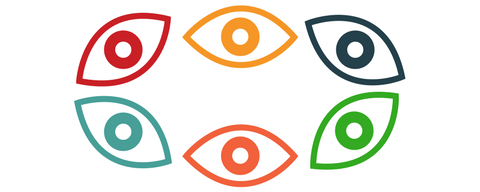Be Agile
The life at AP
What is a Process Communication Model © ?
31 Jul 2019
by
Sylvain Chery
The Process Communication Model © (PCM) is a tool which significantly improves teamwork at the professional level and also applies perfectly to privacy.
Communication has the highest priority in organizations today. Communication is a non separate part of our everyday life, because it allows us to understand each other. So at the professional level, it is even more important!
In the professional environment, you have to communicate with your team, superiors, colleagues, customers, trainees, suppliers, partners, etc. To communicate is simple, to communicate well is not that easy.
During a meeting of discovery organized in our offices, our COO Franck presented us this tool for better communication.

The origins of the Process Communication Model®
This model is based and inspired by Transactional Analysis. It was developed by Taibi Kahler, psychologist, author, journalist and communication specialist in the 1970s. Developed in cooperation with NASA, it has been used by Bill Clinton to adapt his speeches to his audience.
The 6 perceptions
The PCM model is based on our perceptions of the world. Everyone perceives the world in six different ways: logical thinking, 'imaginary action', emotion, opinion, action and reaction.
These modes of perception are filters through which we experience the world. . We use these modes of perception to make contact with others, and prefer that others come into contact with us from our favorite mode of perception.
Each of us therefore has his preferences on the "how to say".
These six perceptions of the world around us, when mixed and assembled, describe six different types of personalities.

The psychological needs
Each individual is driven by psychological needs: need to be recognized as a person, need to be recognized for his work, for his opinions, need for excitement, need for solitude, need for contact, need for structuring time or sensory needs.
Stress occurs when one or more needs are not powered.
6 types of personality
- The empathic
- The perseverant
- The Worker
- The dreamer
- The promoter
- The rebel

Each individual is a combination of personalities. So there is potentially 720 (factorial 6) different profiles!
The Philosophy of the model
No type of personality is better or smarter than another. In this model, there is no judgment.
Each individual has a predominant personality, which is called the base. The basic type of personality develops from the birth or the first months and does not change during our life.
During our childhood, we develop some characteristics of the five other types of personality. These personalities stand out more according to their degree of "anchoring" in the individual, as illustrated by this multi-storey house.

At the age of 7, the order of floors is structured, it will not change throughout the life of the individual except from one exception that will be explained later.
The first four phases are the traits that stand out most in the person.
The "elevator" allows us to use all the resources of each floor according to the demands of our environment or our own motivation. We then experience the different characteristics of each type of personality.
When a person has characteristics of a personality type other than his or her base, it is said to have changed phase ("phasing"). This also changes the motivation and causes of stress of the person, based on the new phase.
According to Taibi Kahler, the origine of the phase change occurs when there is a severe and durable stress or an important change in life (mourning, birth, promotion ...). There is no precise rule because it can happen that severe stress does not cause a phase change. In any case, the change is never made overnight, the needs of the person evolve gradually. And the new phase will always be colored by the base of the person.
In fact, 70% of individuals will never change their phasing.
To go further in the Process Communication Model ©
This is a real tool for personal development, it can also be used to describe different management styles (autocratic, democratic, benevolent, laissez-faire) according to personality types, communication channels according to the personality parts (protector, director, computer, comfort, emoteur), psychological needs and predictive behaviors under stress
This model allows to know better to develop our potential of adaptability and it facilitates interactions between individuals to act together.
To go a little further in the discovery of this tool, just click here!
Want to learn more about improving communication in your organization?

